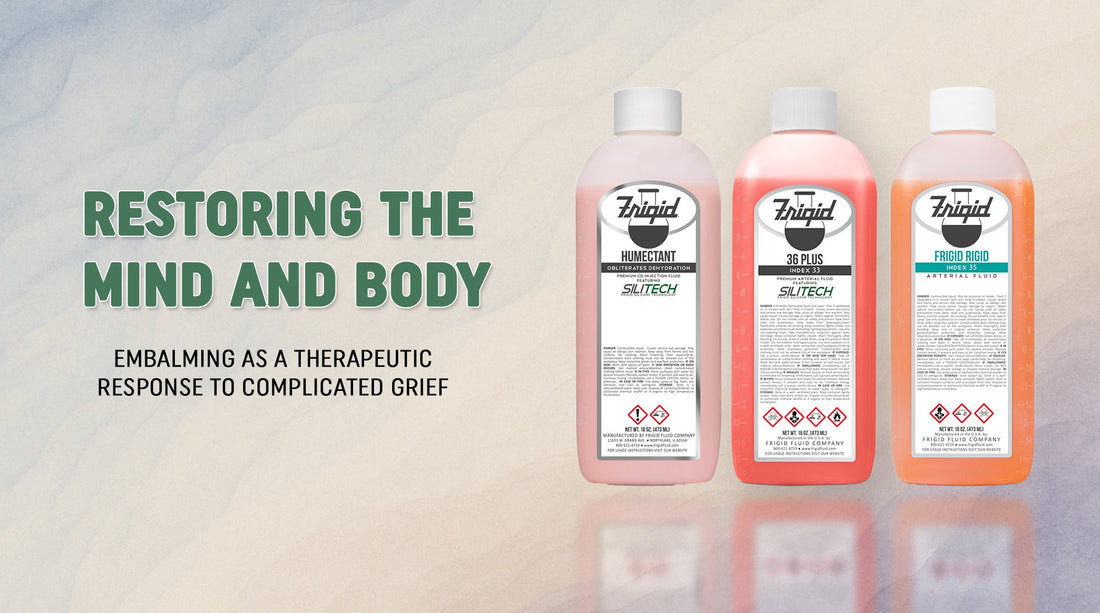Grief is a natural response to loss, but when a loved one dies after a prolonged illness, the grieving process can become more complicated. This form of grief, known as "complicated" or "prolonged grief disorder," involves persistent emotional pain, difficulty accepting the loss, and an inability to move forward. Modern neuroscience reveals that this type of grief is not just emotional; it's also biological. It changes how the brain functions, especially in regions responsible for emotional regulation, memory, and social connection. One powerful yet underappreciated tool that can aid in this healing process is high-quality embalming and restoration. For families who have watched a loved one suffer through illness, seeing that person restored in death can bring a sense of peace and closure that aids in emotional and neurological healing.
The Brain’s Role in Grief
When someone experiences loss, their brain engages multiple areas responsible for processing emotions, memory, and social bonds. The amygdala, a small almond-shaped part of the brain, lights up when we feel fear or sadness. The anterior cingulate cortex, which processes social pain (like loneliness or separation), and the prefrontal cortex, which helps us understand and regulate our emotions, are all deeply involved in grief. In complicated grief, the brain doesn’t adapt as it normally would. Instead, studies show prolonged activity in a region called the nucleus accumbens, which is associated with longing and attachment. In simpler terms, the brain remains "stuck," still searching for the person who has died, unable to accept the new reality.
A prolonged illness makes this worse. Families witness daily decline, disfigurement, and suffering—images that are often seared into memory. These traumatic visuals are stored in the brain’s emotional centers and can replay vividly, intensifying grief and anxiety. Neuroscientists have found that visual cues are powerful in how we process loss. Seeing a loved one at peace can help the brain reconcile the finality of death and begin to release the emotional hold.
How Embalming Supports Healing
This is where embalming plays a critical role. Embalming is not just about preservation—it’s about restoration. For someone who has died from a long illness, the physical toll may be evident: sunken features, jaundice (a yellowing of the skin), dehydration, or pressure sores. A well-trained embalmer can reverse many of these signs, allowing the person to look peaceful and familiar.
Modern embalming uses a mix of chemicals designed for specific effects:
- Formaldehyde or glutaraldehyde: These are preservatives that slow decomposition by "stabilizing" proteins in the body.
- Humectants: Ingredients like lanolin draw moisture into tissues, rehydrating dry or emaciated areas.
- Surfactants and emulsifiers: These help distribute the embalming fluid evenly throughout the body, even in areas with poor circulation.
- Dyes: Non-cosmetic colorants like eosin or ponceau restore a natural, healthy tone to the skin.
Special techniques are also employed:
- Restricted cervical injection allows the embalmer to manage delicate blood vessels by carefully injecting fluid into each side of the head and neck.
- Surface packs and cauterant gels treat bedsores and ulcers, drying, bleaching and deodorizing the tissue to allow for cosmetic application.
- Tissue builders, injected into sunken facial areas, can restore contours lost during illness.
The Psychological Impact of Restoration
For families, seeing a loved one restored in death can change everything. Neuroscience shows that visual confirmation helps the brain accept reality and begin the grieving process. This process, called cognitive reappraisal, is how the brain rewrites painful memories in light of new, more peaceful information.
In recent surveys conducted by the National Funeral Directors Association (NFDA), families who viewed their loved one’s body reported significantly more satisfaction with the funeral and greater emotional resolution. They felt that they had truly said goodbye. This is especially crucial when the person has undergone a long and visible decline. Restoration helps replace painful images with peaceful ones.
Conclusion
Embalming is often misunderstood as a purely cosmetic or outdated practice. In reality, it is a deeply human and scientific process that bridges body and mind, chemistry and compassion. For families grappling with complicated grief after a prolonged illness, seeing their loved one at rest, looking like themselves, can be a vital part of healing. As embalmers, funeral directors, and educators, we must continue to advocate for restoration not as vanity, but as therapy for the heart and for the brain.


